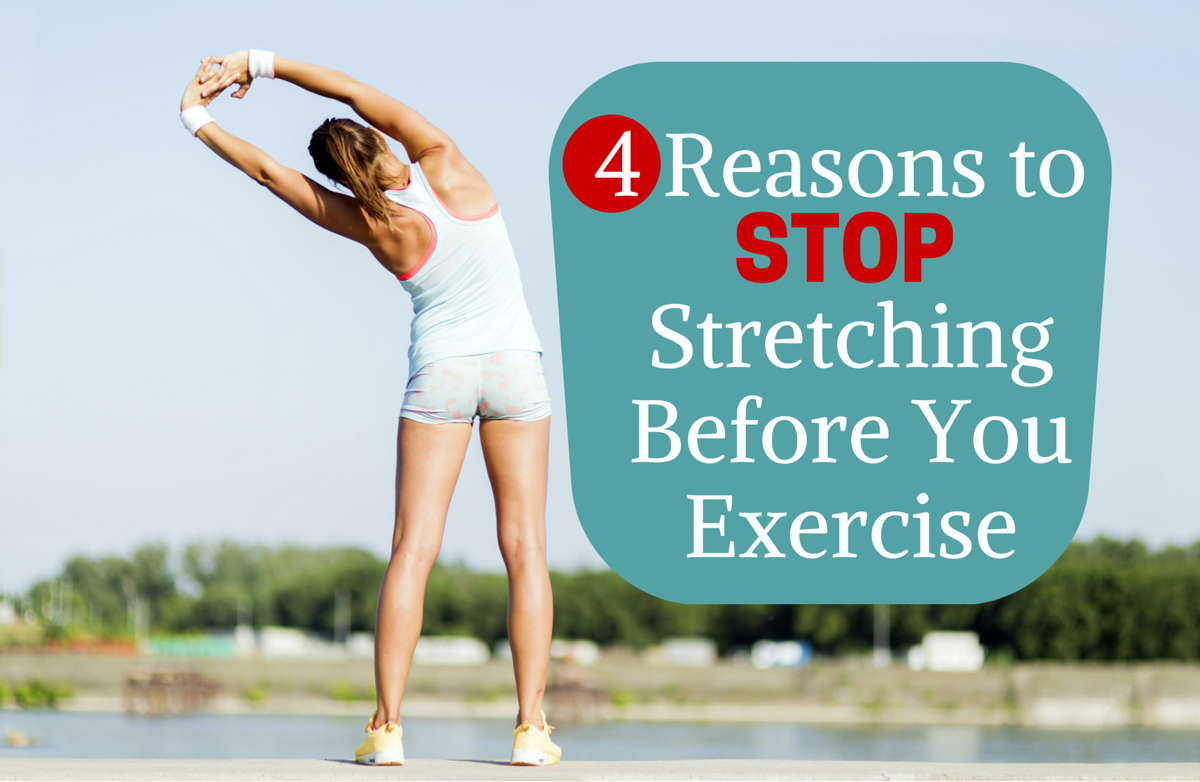4 Reasons to Stop Stretching Before You Exercise
By now, you probably know how important it is to warm up before you work out. Warming up prepares your body for the increased demands of physical activity, reducing your risk of injury and complications. Beyond sending more oxygen and blood flow to your muscles, a proper warm up also prepares you mentally for what’s to come—a workout that may take concentration, coordination and a little motivation.
The one thing you shouldn’t do at this time is the very thing that most people do: stretch. So why is stretching before a workout a bad idea?
Here are four reasons why you shouldn’t stretch before you exercise.
- Stretching is not the same thing as warming up. Confusing stretching with warming up is an all-too-common mistake, so don’t feel bad if you thought the two were one in the same. You should spend a few minutes doing lighter intensity activity that mimics your upcoming workout—walking before running, slow cycling before biking, light aerobics before a fitness class. That is a warm-up. It gives your body time to adjust to the higher demands of exercise so that your breathing rate, circulation and heart rate can all increase in order to supply your working muscles with the blood, nutrients and oxygen they need to keep things running smoothly. Warming up also helps lubricate your joints. Stretching does not serve the same purposes and therefore does not pass for a warm-up.
- Stretching before a workout undermines your warm up. If you are going to stretch before a work out, you need to warm up first, and then stop moving in order to stretch. Have you ever thought about how the act of stopping to stretch cancels out the benefits of warming up? Your body temperature, heart rate, and breathing rate all drop considerably once you stop moving. After a few stretches, you’re practically back to where you started: with cold muscles and a resting heart rate that is not ready to jump into a work out. This is one of the biggest reasons I do not advocate stretching after a warm up session. However, if you were to warm up, stretch, and then warm up again, that might be OK. But who has the time for all that?
- Stretching does not prevent injury. It wasn’t long ago that fitness experts used to say that stretching would prevent injury. That’s part of the reason people were encouraged to stretch before physical activity. But research has not been able to prove this theory. These days, it’s generally accepted among fitness trainers, athletic trainers and physical therapists that the act of stretching does not prevent injury, no matter when you do it. According to a recent story by AP medical writer Maria Cheng, CDC experts who reviewed more than 100 stretching studies found that “people who stretched before exercise were no less likely to suffer injuries such as a pulled muscle, which the increased flexibility from stretching is supposed to prevent.” So if you have been stretching before your workouts in an effort to prevent a sprain or strain, your efforts might be in vain.
- Stretching before exercise may actually increase your risk of injury. That’s not just because it undermines your warm up. “Traditional stretches, like when people bend over to touch their toes or stretch their legs on a fence,” wrote Cheng, “often cause the muscles to tighten rather than relax—exactly the opposite of what is needed for physical activity.” Your risk of overstretching at this time is greater, and this tightness can undermine your speed and range of motion when you start exercising. Some research has shown that certain athletes who stretch are more susceptible to injuries and performance problems. Experts theorize that a certain amount of “tightness” is needed for muscle strength and power in certain sports, such as throwing a fastball or kicking a soccer ball.
This is not a campaign against stretching. I firmly believe that most people benefit greatly from stretching and don’t do it enough. But it should be done at the right time and not pushed to the limits. Most research shows us that those who are most likely to suffer injuries are people on the opposite ends of the bell curve; the least flexible people—and the most flexible—are more prone to injuries and problems. That’s good news for your average exerciser because you don’t need to t urn into a human Gumby to stay injury-free. A normal range of flexibility, often called a “functional range of motion” can help decrease muscle tightness and keep yourself active, mobile and capable even as you age, when flexibility naturally takes a decline.
So when is the best time to stretch? (And yes, you should stretch!) If you haven’t guessed it yet, it’s at the end of your workout, right after your cool down. Your muscles and joints are much warmer and lubricated after a workout than they are before one (even if you warm up), which means you’ll get more out of your stretches at this time. And because your body is returning to a relaxed state, stretching after exercise is simply a feel-good way to end your workout.
Overall, we should all aim to stretch regularly. It may take a little effort to change your habit of stretching before exercise, but the benefits and reduced risks are probably well worth it.





